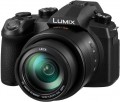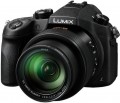DxOMark rating
The result shown by the camera in the DxOMark ranking.
DxOMark is one of the most popular and respected resources for expert camera testing. According to the test results, the camera receives a certain number of points; The more points, the higher the final score.
Total MP
The total number of individual light sensitive dots (pixels) provided in the camera's sensor. Denoted in megapixels - millions of pixels.
The total number of MPs, as a rule, is greater than the number of megapixels from which the frame is directly built (for more details, see "Effective number of MPs"). This is due to the presence of service areas on the matrix. In general, this parameter is more of a reference than practically significant: a larger total number of MPs with the same size and effective resolution means a slightly smaller size of each pixel, and, accordingly, an increased likelihood of noise (especially at high ISO values).
Effective MP number
The number of pixels (megapixels) of the matrix directly involved in the construction of the image, in fact — the number of points from which the captured image is built. Some manufacturers, in addition to this parameter, also indicate the total number of MPs, taking into account the service areas of the matrix. However, it is the effective number of MPs that is considered the main indicator — it is this that directly affects the maximum resolution of the resulting image (see “Maximum image size”).
A megapixel is 1 million pixels. Numerous megapixels ensures high resolution of the captured photos, but is not a guarantee of high-quality images — much also depends on the size of the sensor, its light sensitivity (see the relevant glossary items), as well as hardware and software image processing tools used in the camera. Note that for small matrices, high resolution can sometimes be more of an evil than a blessing — such sensors are very prone to the appearance of noise in the image.
Full HD (1080)
The maximum resolution and frame rate of video captured by the camera in
Full HD (1080p).
The traditional Full HD video resolution in this case is 1920x1080; other options are more specific and practically do not occur in modern cameras. Regarding the frame rate, it is worth noting first of all that a normal (not slow-motion) video is shot at a speed of up to 60 fps, and in this case, the higher the frame rate, the smoother the video will be, the less jerks will be noticeable when moving in the frame. If the frame rate is
100 fps or higher, this usually means that the camera has a slow-motion video mode.
File recording formats
File formats in which the camera can record video. Given that the footage is designed to be viewed on an external screen, you should make sure that the playback device (DVD player, media centre, etc.) is able to work with the appropriate formats. At the same time, many camera models themselves can play the role of a player by connecting to a TV via an audio / video output or HDMI (see the corresponding paragraphs of the glossary). And if the video materials are to be viewed on a computer, you should not pay special attention to this parameter at all: problems with format incompatibility in such cases rarely occur, but are usually solved by installing the appropriate codec.
Maximum video length
Restrictions on the length of the recorded video provided in the design of the camera. In some models, the recording time is limited in time (for example, 30 minutes) — thus, to record a longer video, it will have to be split into separate clips. In others, the duration depends only on the amount of free memory — you can record as long as there is enough space. There is also a combination of these options; in such models, video recording stops as soon as either of the two limits is reached.
Connection ports
— USB C. A universal USB interface that uses a Type C connector. USB ports themselves (all types) are used mainly for connecting the camera to a computer for copying footage, managing settings, updating firmware, etc. Specifically The Type C connector is comparable in size to earlier miniUSB and microUSB, but has a reversible design that allows the plug to be inserted in either direction. In addition, USB C often operates according to the USB 3.1 standard, which allows for connection speeds of up to 10 Gbps - a useful feature when copying large amounts of content.
-
HDMI. A comprehensive digital interface that allows you to transmit video (including high resolution) and audio (up to multi-channel) over a single cable. The presence of such a port makes it possible to use the camera as a player: it can be directly connected to a TV, monitor, projector, etc. and view your footage on the big screen. In this case, broadcast capabilities can include not only video playback, but also demonstration of captured photos in slide show mode. HDMI inputs are present in most modern video equipment, and connection is usually not a problem.
Nowadays, there are several versions of the HDMI interface on the market:
- v 1.4. The oldest version currently relevant, released in 2009. However, it supports 3D video, is capable of working with resolutions up to 4096x2160 at a speed of 24 fps, and in Full HD resolution the frame rate can reach 120...fps. In addition to the original v.1.4, there are also improved modifications - v.1.4a and v.1.4b; they are similar in basic capabilities, in both cases the improvements affected mainly work with 3D content.
- v2.0. Significant HDMI update introduced in 2013. In this version, the maximum frame rate in 4K has increased to 60 fps, and support for ultra-wide 21:9 format can also be mentioned. In update v.2.0a, HDR support was added to the interface capabilities; in v.2.0b this function was improved and expanded.
- v 2.1. Despite the similarity in name to v.2.0, this version, released in 2017, was a very large-scale update. In particular, it added support for 8K and even 10 K at speeds up to 120 fps, and also further expanded the capabilities for working with HDR. This version was released with its own cable - HDMI Ultra High Speed; all features of v.2.1 are available only when using cables of this standard, although basic functions can be used with simpler cords.
— Headphone output. Audio output allows you to connect headphones to the camera. As a rule, it is represented by a classic 3.5 mm mini-jack. The presence of such a connector provides the ability to monitor sound during video recording in real time. This is especially important when filming interviews, vlogs and other similar projects.
— Microphone input. Specialized input for connecting an external microphone to the camera. External microphones are significantly superior to built-in microphones in sound quality. Firstly, they are not so sensitive to the camera’s “own” sounds - from buttons, control wheels, focus motors, etc. (and if the microphone uses a long wire and is not attached to the body, these sounds will not be heard at all). Secondly, external microphones themselves have more advanced characteristics. On the other hand, their use is justified mainly for professional video recording; therefore, the presence of a microphone input, as a rule, corresponds to advanced video recording capabilities
Viewfinder crop
This setting can be simplistically described as the amount of magnification provided by the viewfinder relative to how the image appears to the naked eye. The features of modern viewfinders are such that most of them have crop values less than 1 — that is, it somewhat reduces the visible “picture”.
In general, the larger this parameter, the larger the objects look in the viewfinder and the easier it is to focus through it.
Screen resolution
The size of the camera's native display in pixels. The higher the resolution of the display, the more smooth and detailed the image it reproduces, the less noticeable the graininess and individual pixels, and the more the display as a whole is pleasing to the eye. On the other hand, the high-resolution display affects the cost of the camera itself (albeit quite slightly).
Unlike the rest of modern electronics, it is customary for cameras to indicate this parameter not as the horizontal and vertical size, but as the total number of pixels on the screen. To date, screens of 230K pixels correspond to the entry level, 460K pixels to the average, more than 900K pixels to the advanced.

